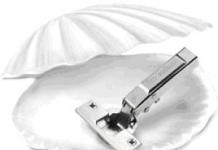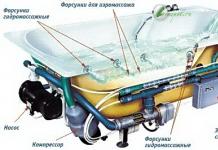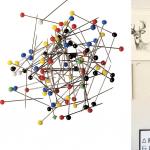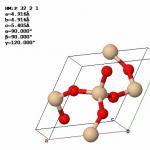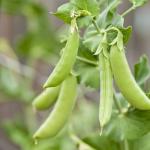What is weapon burnishing? What does it give and how to do it at home?? Such questions are of interest to many beginners on their path of cultivation, as a hunter. Burning steel initially, from the point of view of the technologist, is the process of applying a thin coating to the metal due to a chemical reaction.
Many people perceive this process only from one side - the blued barrel looks beautiful. However, there are at least two additional pluses: metal coated with a film is less susceptible to corrosion, in addition, the coating can have shades, which provides additional disguise for weapons. Both of these factors are extremely important for a real hunter. For this reason, the burnishing of weapons is an important process.
Technology Features
Quite often you can hear that blueing weapons is only possible in the factory. This is not a completely correct statement. Yes, during the industrial processing of steel, a change in the chemical plan of the upper layer of the metal is achieved, and the predominant iron oxide in this method plays a major protective role.
It is not easy to achieve high-quality metal blackening at home, according to some experts, steel oxidation at home in compliance with industrial quality standards is even impossible, but there are many other ways that have the same effect and are quite possible for anyone to use at home. All these "home" technologies can be divided into three groups according to the fundamental principles of the process.
It is customary to single out:
- cold burnishing of steel;
- hot burnishing of steel;
- oxidant treatment.

Rules and safety precautions
Whichever of these methods is chosen, in any case, a number of procedures will have to be performed in the following sequence:
- Cleaning the surface on which the burnishing of steel will take place.
- Surface grinding to perfection.
- Degreasing (required), after this stage, work only with rubber gloves.
- The use of tools for bluing metal at home.
- Finishing the metal surface.
It is clear that steel burnishing at home is a very dangerous job, and for this reason, following certain rules is vital. The first thing to understand is that the solutions contain active and aggressive chemicals, so the steel bluing fluid should be stored in a container specially designed for this purpose, however, the whole process should also be carried out in a container specially prepared for this purpose.
It is very important to remember that many bluing compounds contain acids and for this reason the dishes should be glass, porcelain or faience, and it is advisable not to use metal containers.
Secondly, in the process of preparing the blueing of trunks, there are works on mechanical cleaning of the metal, which means that the person performing this work must have means of protection against mechanical damage to the skin and eyes.
Also, such actions involve working in a well-ventilated area, since breathing dust and chemicals is not good for anyone. Recommended products for cleaning and sanding surfaces are pumice stone, sandpaper and fine sand.
Getting started, you should be clearly aware of the order and sequence of your actions, otherwise the product may be damaged. It should also be remembered that metal burnishing is work with very dangerous and aggressive chemicals, contact with the skin of which can cause serious chemical burns.

Cold bluing: features, advantages, disadvantages
Quite often, when asked how to burn steel at home, some option is given precisely from the cold burnishing method. As a rule, this method is used in cases where the part does not experience strong mechanical stresses. From the name it is clear that such a process of bluing trunks at home occurs without thermal exposure. In practice, various solutions are used.
With mortar and brush
There are several industrial options for ready-made mixtures for applying them to a metal surface with a brush. This means for bluing "Voron 3" of domestic production, as well as the well-known means for bluing the imported mixture "Paris oxide".
The benefits are visible to the naked eye. This is the simplicity of the process, as well as the fact that the liquid for bluing steel does not need to be prepared independently, and the requirements for safety and conditions for the process are minimal.
But this method also has its downsides. It is very difficult to penetrate with a brush into all the "crevices" of the part with its complex configuration. For the "smoothness" of the product will need additional polishing. Well, the worst thing about such bluing of trunks is that even a slight mechanical damage will leave a mark and the processing will have to be repeated.
Immersion method
The second option involves immersion for bluing the metal of the part into the solution. The main advantage of this method is that the liquid penetrates into “all cracks” of the part and covers it with a uniform protective layer. Secondly, the liquid does not splatter, as in the first case when applied with a brush.
Recipes for cold applying a protective film can be taken as follows:
- Iron chloride (FeCl 3) - 75 grams; ethanol (ethyl alcohol, medical alcohol C 2 H 5 OH) - 30 grams; copper sulfate (copper sulfate, CuSO 4 (anhydrous white) or CuSO 4 * 5H 2 O (blue)), nitric acid (HNO 3) - 20 grams each.
- Iron chloride (FeCl 3) - 170 grams; nitric acid (HNO 3) - 13.5 grams; hydrochloric acid (HCl) and copper sulfate copper sulfate, CuSO 4 (anhydrous white) or CuSO 4 * 5H 2 O (blue)) - 4 grams each.
This method is not suitable for those who are trying to learn how to grind a knife, since such a coating is not resistant to mechanical stress and will quickly wear off. Quite often, the problem of how to burn a gun is recommended to be solved with the help of burnishing with rusty varnish, as one of the most effective and least costly methods. The essence of the method is to process the part with a very active corrosive medium - “rusty varnish”. This mixture must first be prepared.

It is recommended to do everything under the hood or on the street on the leeward side, so as not to inhale the very harmful gases formed during the chain of reactions. First, 12 grams of hydrochloric acid (HCl), as well as nitric acid (HNO 3) in an amount of 20 grams, are placed in a glass (required) dish (attention, we look not by volume, but by weight, acids have different densities). 30 grams of iron scale (rust) and 5 grams of iron filings are added to this container with a mixture of acids.
The reactions must be allowed to pass. After that, we add 50 grams of distilled water and ethyl alcohol (medical alcohol C 2 H 5 OH) to the obtained reaction products.
The solution must be left for 12 hours and after that it is necessary to separate the resulting solution from the scale and salts precipitated. Now, for bluing at home with this method, you should place the part in the solution and wait until the part turns black. After that, the part must be washed with water and the red traces from the solution exposure should be removed with a brush. As a result, we get a very good result of chemical bluing.
As in the first case (with a brush), and in the second (using solutions), after all the procedures, the blued parts must be thoroughly washed using detergents. Unfortunately, this method is not suitable for those who are trying to learn how to grind a knife, as such a coating is not stable and will quickly wear off.

Hot bluing: features, advantages, disadvantages
Many, especially aged craftsmen, prefer to burn guns in an exclusively hot way, considering this method to be the only correct one. The argument is very simple. A product that has been hot blued has a much longer coating. Another advantage of this method is the absence of harmful fumes.
Quite often, this method is called bluing in oil, which actually explains the technology of the process. The technology is very simple and bluing steel with your own hands using this method is quite easy.
To begin with, the part is heated, the more, the better. After that, the part is immersed in oil (this is what gave the name to the method as bluing steel in oil). It can be linseed, olive, or gun oil. In principle, you can even use conventional engine oil.
After the part has been held in oil for ten seconds, the part is taken out, and the oil must be allowed to drain on its own, otherwise stains will appear. The next step is to "bake" the oil on the surface. For this, it is customary to use a blowtorch. An important moment of steel burnishing in oil is to determine the moment of readiness of the product.
Experienced craftsmen say that it is necessary to stop baking at the moment when the part is just beginning to change its color from brown to black. Steel burnishing in oil is one of the oldest and most proven methods of protecting metals from corrosion; it has not failed craftsmen for centuries, and it will not fail now.

Treatment with an oxidizing agent: features, advantages, disadvantages
For a chemist, the question of how to burn steel is not worth it, literally the first thing that he will offer is the action of an oxidizing agent. The only disadvantage of this method is that the mixtures need to be heated to the melting point, and this is not always possible at home. Most often, such processing is carried out using nitrates, hence the name - bluing in saltpeter. Although in fact the choice of oxidizing agents is quite large and bluing in saltpeter at home is not the only effective method using oxidizing agents.
Composition of working solutions
Of the recipes should be highlighted:
- Caustic soda (NaOH) - 2.8 grams; disodium hydrophosphate (Na 2 HPO 4) - 100 grams; sodium nitrate (NaNO 3) - 50 grams (The calculation is given for 1 liter of water);
- Caustic soda (NaOH) - 400; potassium nitrate (KNO 3) and sodium nitrate (NaNO 3) - 10 grams each (The calculation is given for 0.63 liters of water).
Immersion time in solutions is at least 30 minutes. This technique is suitable for burnishing a knife at home, as it will allow you to get a durable coating without violating the hardness of the metal.
For all its advantages, the method of oxidizing metals using oxidizing agents is quite expensive and difficult for beginners, since it requires good knowledge of chemistry and some skill. It should also be noted that burnishing of stainless steel is carried out by other methods that are not related to these methods.
Video
In our video you can see in detail all the stages of cold bluing.
Hello ladies and gentlemen. Today we’ll talk about burnishing, oxidizing or blackening steel. It is a method of surface coating steel with a thin layer of iron oxides. It protects the metal from corrosion, and also gives an attractive tint to the product. You can achieve black blue-black, gray or blue. The process takes place under the influence of chemical (alkali or acid) and thermal methods. I will show a few methods that I have personally tested.
hot bluing
Let's start with the fastest, and perhaps the most effective way.
We will need:
- Machine oil.
- Degreaser.
- Bake.
- white spirit
Blade burnishing process:
We will burn the knife with temperature and oil. I used machine, but sunflower will do. The product to be blued, in my case, a knife, must be degreased. I used white spirit.

Next, pour the oil into a container, preferably porcelain, I poured it into a mug. Immerse the blade in oil, and send the mug to the oven at a temperature of approximately 280 degrees Celsius. A few words about the oven. Ideally, you need a muffle furnace with temperature control, but where do we get one? A kitchen oven will do, but the room must be very well ventilated. I have used a cooling forge as well as a cooling stove in the house.


The second option is far from the best, since the oil begins to boil and evaporate, which is accompanied by an unpleasant smell, and the fumes themselves (therefore, the oven is not the best vario). Boil the knife like this for 10 to 20 minutes, until you are satisfied with the shade. Here is the result:
After the product has cooled, wipe it again with a degreaser and wipe it dry. Of course, hardening from this method will not go anywhere.
Blueing in citric acid
A fairly well-known and effective method, but longer.
You will need:
- Lemon acid.
- Warm water.
- Degreaser.
- Napkins.
Blueing process:
For 0.5 liters of water, you need about 50 g of lemon. I poured 10 grams into a glass of 150 ml. The acid must be completely soluble in water. Next, we also degrease the surface of the blade and lower it into the solution. After a couple of minutes, bubbles should form on the product.

Blackening takes from half an hour to two hours. In general, it depends on the steel, but I have tried different grades, and for all the result is about the same. Every 15 minutes, the blade must be taken out and wiped with napkins, removing black plaque. Once you're happy with the color you can pull out the knife and rub some vegetable oil on it to stop the reaction.
And yes, the water should be hot 70-90 degrees Celsius. Although I often scored on this temperature, the process went on, but unevenly.
Here are two examples that are completely different from each other.


Differences due to different steel grades. The one that is darker is high-carbon (former file), blackening is ideal for such brands. Well, I constantly wiped the blade. The second low-carbon steel knife, which I just left for about a day in the solution, and the process went unevenly. In general, I am still satisfied with the result, the shade turned out to be interesting (yellowness is present in the photo, in reality I notice it).


This is another file that turned gray in half an hour.
Blueing in vinegar
You will need:
- Table vinegar 9%.
- Degreaser.

Blueing process:
Vinegar must be boiled, but you can do without it. It already smells awful, so I scored. But vinegar should not be cold, at least at room temperature. The blade can be washed under hot water so that it also warms up, then we degrease it and dip it in vinegar, also cleaning it from black plaque every 15-20 minutes.

After the blade is wiped in oil.


Outcome is this:
All of these methods allow you to oxidize the blade, which will protect it from rust, as well as give it an interesting tinted color. In all cases, you should not breathe bluing fumes, they are harmful to health.
All these methods will allow you to achieve any desired result. The coating is strong enough in all the methods described, and it will last for a couple of years for sure. I hope the article was helpful for you.


Blueing (blackening) of metal, steel is a surface coating with a special layer. It gives the product a certain color: black, blue or another. With this processing, a beautiful toning appears. However, the method is widely used due to its practical benefits: objects covered with a special film are well protected from corrosion. The process has long been widespread in industry. Some use bluing at home.
Blueing methods
There are several ways similar processing. In industry, bluing is carried out by changing the structural composition of the surface. Application - in a special way. At home, using such technologies is very expensive or simply impossible.
However, there are ways to blacken steel at home. It does not require industrial equipment. Everything you need can be found in the store. These methods are presented below.
hot method
 The hot method involves exposure high temperature. First, the metal is tarred, then fired, for example, with a blowtorch.
The hot method involves exposure high temperature. First, the metal is tarred, then fired, for example, with a blowtorch.
The principle is as simple as possible and has been used since ancient times. Even an ordinary kitchen stove is enough for work. Under the influence of temperature, the upper layer interacts with oxygen.
Heating should be carried out slowly, gradually bringing up to 400 ° C. The surface becomes first brown and then black. You will need oil: olive or gun oil. It is important to calculate its amount and not overdo it. Otherwise, there will be stains.
The method at home is used less often than others because of the technology. Although it has advantages:
- the protective effect lasts longer than with the cold method;
- harmless to health;
- requires little expense.
Before flameless firing, it is desirable to treat the product with a special composition, which includes:
- sulfur;
- grease.
The ratio of components is one to twenty, respectively. Apply as thin a layer as possible. As a result, the protective surface is very even.
You can check the quality of bluing in a simple way. Dip the brush in plain water and brush over the treated surface. You should get a film, but not a drop.
cold way
 Another processing method is cold bluing. It is often used if products cannot be subjected to serious loads. It takes a little time and also does not require a lot of money.
Another processing method is cold bluing. It is often used if products cannot be subjected to serious loads. It takes a little time and also does not require a lot of money.
The bottom line is to cover the surface with a special solution, for example, Parisian oxide. Usually applied with a brush. For greater effect, the product is immersed in a solution. After the procedure, the product:
- Wash.
- Wipe with a rag. It must be moistened with alcohol.
The use of oxidizers
There is a method using molten oxidizers:
- nitrates;
- nitrites.
Such blackening of metal at home involves immersion in the melt. The product is in it until the surface acquires characteristic color. When working, it is worth remembering that the listed substances are hazardous to health. They can be replaced with the following solutions:
- hot salt;
- alkaline.
Some Features
Burning steel at home is not difficult. Oxidizing agents are also used for processing other metal products:
- cast iron;
- copper, which acquire an intense red color.
There are a number of things to keep in mind:
- If the products are heat-sensitive or hardened, then it is better not to touch them. Burning will degrade performance.
- To complete the process, you must not forget to wash the product with a special tool. After drying, oil lubrication is sometimes required.
- It is not difficult to find the necessary substances in stores, for example, saltpeter, citric acid.
- It is also possible to remove blackening. To do this, you need a special pencil.
Important preparation:
- Before starting, you need to clean the surface and sand it.
- Degrease with a special solution.
- Don't forget rubber gloves to protect your hands. The processed product must not be touched.
- Create ventilation, exhaust.
- Choose a vessel with suitable properties. The volume should allow to drown the workpiece completely. A material that is not afraid of the substances used is suitable: glass, porcelain, stainless steel, faience.
As for color, for some products it can also be important. You can get a different color: from yellow to black, its shades. Therefore, strictly speaking, blackening and blueing are not the same thing.
To achieve the desired color, you will have to further clarify the components of the solutions or pay attention to the heat treatment mode. For example, one way is as follows:
- Copper nitrate (70 g) and alcohol denatured alcohol (30 g) are taken.
- Salt is heated until it melts.
- Add denatured alcohol.
- The product is coated with this mixture.
- Heat up until the desired shade is obtained. The color will change.
Burning Secrets
 There are many recipes for bluing. Every master prefers his, someone might have tricks. In ancient times, recipes for blued steel were often kept secret. Today you can find various recipes for every taste.
There are many recipes for bluing. Every master prefers his, someone might have tricks. In ancient times, recipes for blued steel were often kept secret. Today you can find various recipes for every taste.
Cold bluing
You can give the following example of cold bluing at home:
- A liter of water (distilled) is taken, two types of acid: 30% hydrochloric (4 g), 69% nitric (13.5 g). Ferric chloride trivalent (170 g) and copper sulfate divalent (4 g) are also added.
- The mixture is treated with a surface and left for a while. The longer, the better.
- Rust is removed with water vapor and a brush.
- Everything is repeated until the result is desired. Some do it up to 10-20 times.
Recipe with oxidizer
An example is the following recipe for an alkaline solution:
- You will need caustic soda (400 g), sodium nitrate (10 g), water (600 ml).
- The mixture should work for 30 minutes or longer.
- Then the surface is well washed, dried, slightly oiled. If the alkali is not washed off completely, there will be a plaque.
Care must be taken during operation. Hot substances and chemicals can damage health or damage property. It is important not to forget about the correct selection of containers, suitable clothing and basic safety precautions.
Burnishing is the process of producing an oxide layer several microns thick. It is also called oxidation, blackening or blueing. This is a dark, almost black finish, but there are other shades.
Basically, burnishing is used as a decorative coating, but initially, first of all, it is designed to protect steel from corrosion.
I will show you how to make a simple knife bluing at home, using all the components available to everyone.
What will be needed?
- - Boiling water 0.5 liters;
- - Citric acid 50 grams (available at any grocery store).
Knife burnishing process
We take glassware, the size of a knife blade, so that it can be completely immersed in the solution.We boil water in a kettle. Then we take and carefully pour boiling water into the jar. Here you have to be careful, as the bank can burst. To prevent this from happening, you can first pour a little boiling water on the bottom and let the jar warm up, then add the rest of the amount.

Next, pour citric acid into the water and stir thoroughly until completely dissolved.
Before immersing the blade in the solution, it is advisable to wipe it with alcohol to remove all excess grease and dirt.
Immerse the knife blade.

After 1-2 minutes, a reaction will begin, which will be noticeable by numerous bubbles.

Blueing will take you approximately 30 to 60 minutes. Everything again depends on your requirement for the color of the coating and the steel grade of the knife.
During the whole process of bluing, you must do the following:
- - Every 10 minutes, take out the knife and wipe the blade with a soft paper or cloth to remove black deposits from the surface.
- - Approximately every 1-2 minutes it is necessary to move the blade in the solution, thereby dumping large gas bubbles from the blade. This will ensure uniform coverage.



After the time has elapsed, if you are satisfied with the color of the coating, it is necessary to wipe the blade with sunflower oil for the last time. This will stop the reaction, make the coating uniform and strong.
This completes the burnishing of the knife blade.

At the end I want to add:
- Do not inhale the pores of gases when bluing, as they are harmful. And it is better to use ventilation, if you have it, or at least open a window in the room.
- For a stable process, the water must be hot. Blueing does not go in cold water. Boiling water is not necessary, but it should be 80 degrees Celsius.
If you get small divorces - do not worry, they will go away after the first or second use.
Such a coating is quite resistant and will last for more than one year.
Blueing, or oxidation, has been known for a very long time. Previously, such treatment was used to protect the metal from corrosion, but now it is mainly for decorative purposes. It will not be difficult for a craftsman to carry out burnishing at home in order to give an interesting look to a metal product or restore it. For this, only desire and certain knowledge are needed.
Ways to make bluing at home steel
3. To remove the old oxide film, decapitation, or weak etching, is used. The barrel is dipped in a five percent solution of sulfuric acid and kept there for one minute.
4. The main process takes place using an aqueous solution (0.7/100), ammonium chloride (6/100), sodium hyposulfite (8/100) and nitric acid (0.3/100). Trunks are "boiled" at a temperature of 70 degrees. In one hour.
5. To fix the resulting oxide film, the workpiece is immersed for five minutes in a chrompic solution (120 g per liter of water). The temperature of the solution is 70 degrees.
After the procedure, metal burnishing at home ends with a thorough washing of the trunks, and in no case should they be taken with bare hands. Particular attention should be paid to safety measures for each processing method! All substances are very aggressive!
